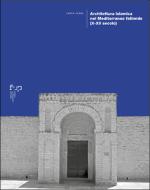Architettura islamica nel Mediterraneo fatimide (X-XII secolo)
| dc.contributor.author | Hadda, Lamia | |
| dc.date.accessioned | 2023-11-27T17:05:27Z | |
| dc.date.available | 2023-11-27T17:05:27Z | |
| dc.date.issued | 2023 | |
| dc.identifier | ONIX_20231127_9791221502282_19 | |
| dc.identifier | OCN: 1411183057 | |
| dc.identifier.issn | 2975-0350 | |
| dc.identifier.uri | https://library.oapen.org/handle/20.500.12657/85590 | |
| dc.language | Italian | |
| dc.relation.ispartofseries | Ricerche. Architettura, Pianificazione, Paesaggio, Design | |
| dc.subject.other | Islamic architecture | |
| dc.subject.other | Mediterranean | |
| dc.subject.other | Fatimids | |
| dc.subject.other | Normans | |
| dc.subject.other | North Africa | |
| dc.title | Architettura islamica nel Mediterraneo fatimide (X-XII secolo) | |
| dc.type | book | |
| oapen.abstract.otherlanguage | Despite a rather conflicted origin and a controversial genealogy, the Fatimids were one of the most promising and flourishing dynasties in Islam. Their two-century reign, from 969 to 1171, represents a significant period in the history of the medieval Mediterranean. The dynasty took its first steps in Ifriqiya, present-day Tunisia, and from there extended their rule throughout North Africa until the capture of Egypt. Sicily, conquered by the Muslims in the 9th century, also fell under Fatimid rule until 1091, the date of the Norman conquest of the island. In this historical context, the book attempts to shed light on the main events starting with the architecture built in North Africa and the cultural exchanges between the two shores of the Mediterranean. | |
| oapen.identifier.doi | 10.36253/979-12-215-0228-2 | |
| oapen.relation.isPublishedBy | bf65d21a-78e5-4ba2-983a-dbfa90962870 | |
| oapen.relation.isbn | 9791221502282 | |
| oapen.relation.isbn | 9791221502275 | |
| oapen.relation.isbn | 9791221502299 | |
| oapen.series.number | 28 | |
| oapen.pages | 160 | |
| oapen.place.publication | Florence |

